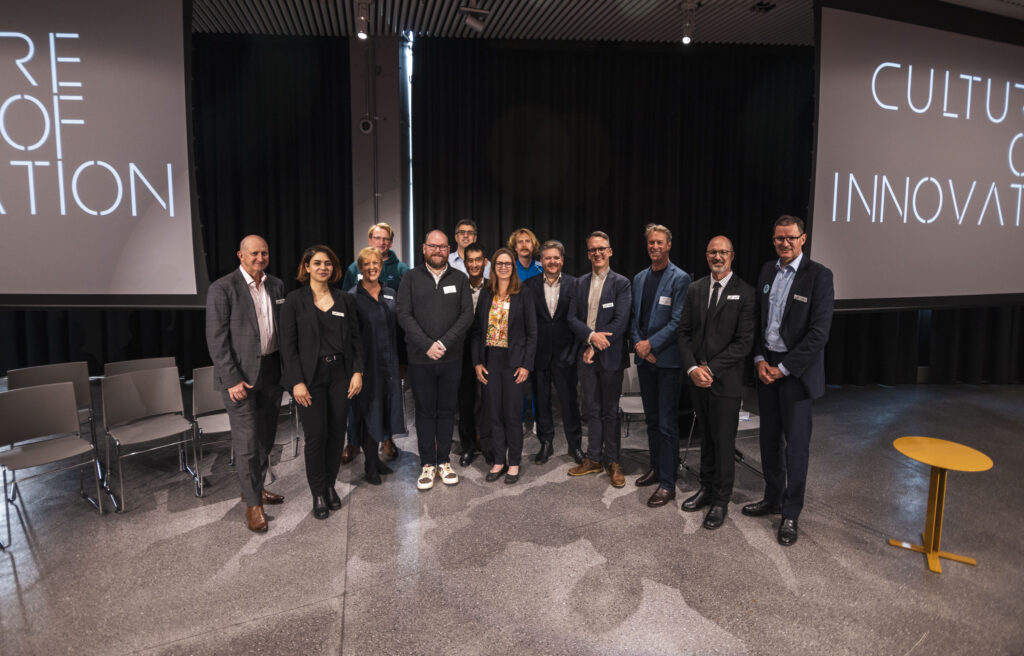Annual Conference 2023 – “Innovation is a team sport”
There is no shortage of problems in great need of innovation in the building industry – housing affordability and supply, building company insolvencies, meeting sustainability and other environmental requirements. The root cause of all these problems can be traced back to the lack of innovation in the wider building sector.
At its second Annual Conference (Wednesday 11 October 2023, Monash College, Melbourne), the Building 4.0 CRC explored the ingredients needed to create the CULTURE OF INNOVATION to address these problems.
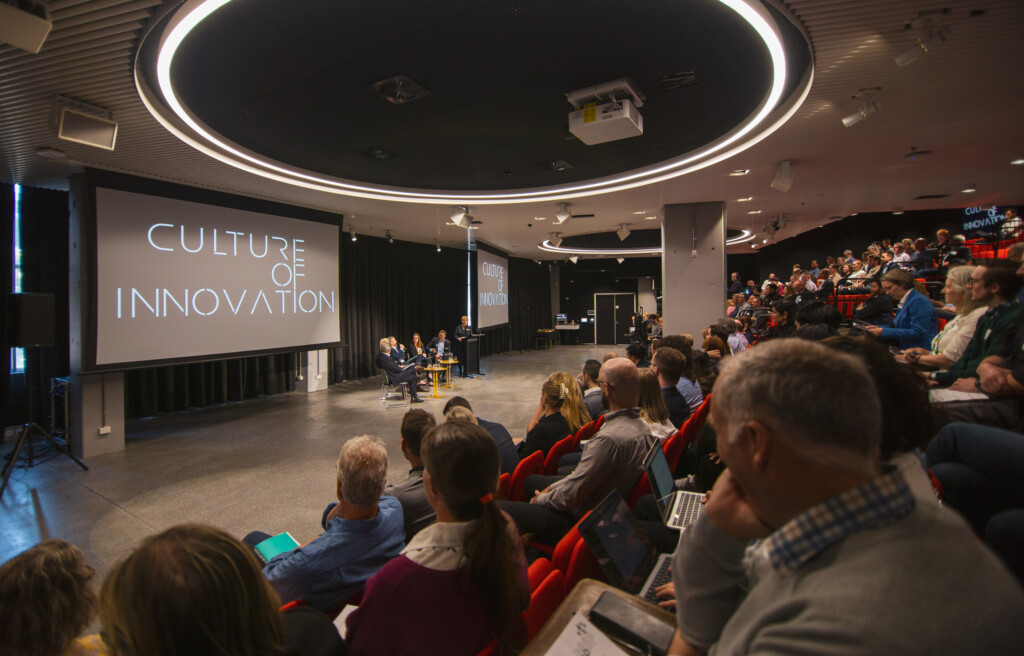
| 230 attendees 5 international keynote speakers 4 esteemed industry panellists 10 exhibitors 12 roundtable discussions 52 projects exhibited 44 PhD posters exhibited |
Keep reading for a wrap up of the day’s highlights.
A panel of Australian industry leaders – Mike Zorbas (Property Council of Australia), Cameron Bruhn (Australian Institute of Architects), Selina Short (EY), Helen Bell (Green Building Council Australia and World GBC) and Professor Mathew Aitchison (Building 4.0 CRC) dissected ideas on how the industry can get better at being bolder.
The discussion ranged from breaking down the siloes separating key players to embracing the complexity of the building industry. From considering how to include biodiversity in the built environment to designing buildings that can be retrofitted and repurposed, instead of knocking them down. From investing in new technologies to upskilling the workforce.
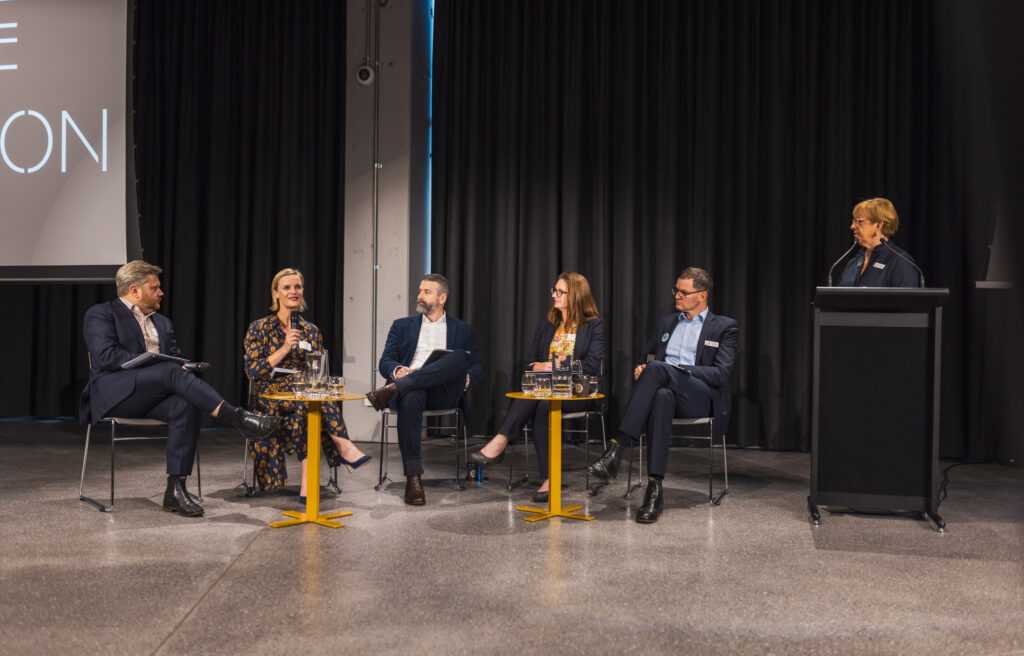
A key message from the conference was that innovators – both here and overseas – are already working on solutions to address these issues:
- Affordable and sustainable housing. Philipp Erler (Gropyus, Germany) outlined his company’s ‘kit of parts’ approach, that assembles prefabricated components on site to create multistorey residential buildings that are both affordable and sustainable. Similarly, Dr Helena Lidelöw (Volumetric Building Companies, US) described how using technology and automation to improve the flow of materials into, through and out of factories is improving building productivity and reducing waste on building sites. The team from Finding Infinity (Australia) demonstrated a net zero building code that can be applied to commercial and residential buildings NOW.
- Flexible and adaptable buildings. Jaimie Johnston MBE (Bryden Wood, UK) explained that by focusing on what projects have in common – rather than what makes them different – they developed a ‘kit of parts’ that can be combined to create a range of buildings: student accommodation, prisons, soldiers barracks and commercial offices (e.g. the Forge). Professor Sigrid Brell-Cokcan (Robots in Architecture, Austria) showed how robots can deconstruct – rather than demolish — buildings so that components can be reused.
- Improved supply chain. David Flynn (KOPE.ai, UK) introduced his company’s platform technology that takes prefabricated components and incorporates them into design, and then connects builders with suppliers who can provide components. Richard Fifita (Veyor Digital, Australia) presented a software platform for planning and scheduling deliveries and materials to building sites that connects the various actors in the supply chain.
- A skilled workforce. The team from Fologram, Ynomia and Holmesglen Institute demonstrated how complex design and construction information can be communicated to fabricators using simple, interactive mixed reality instructions.
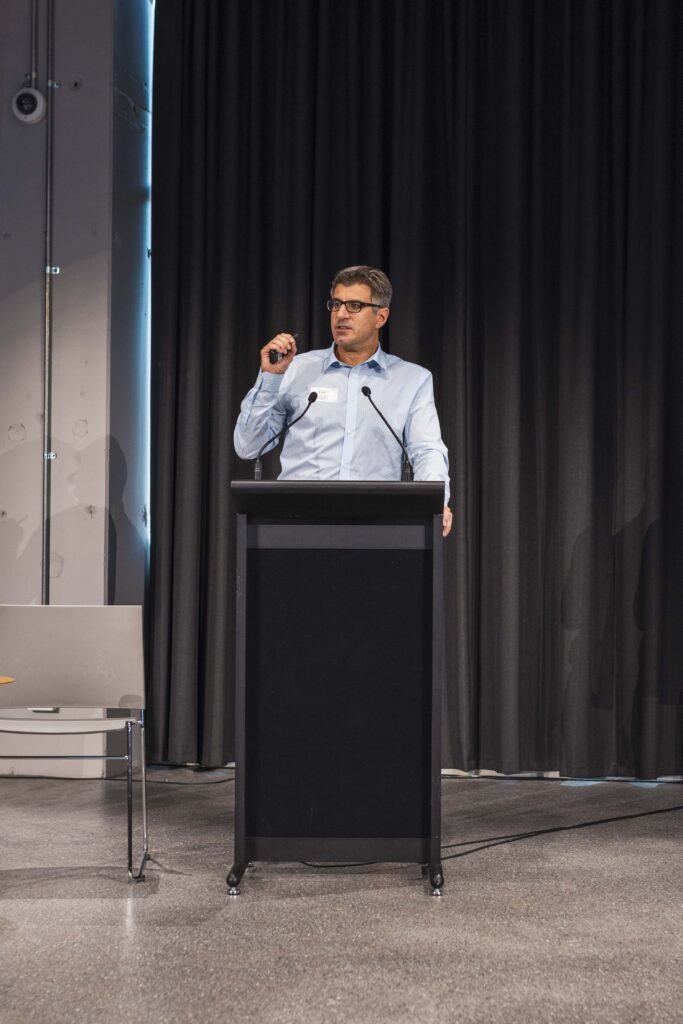

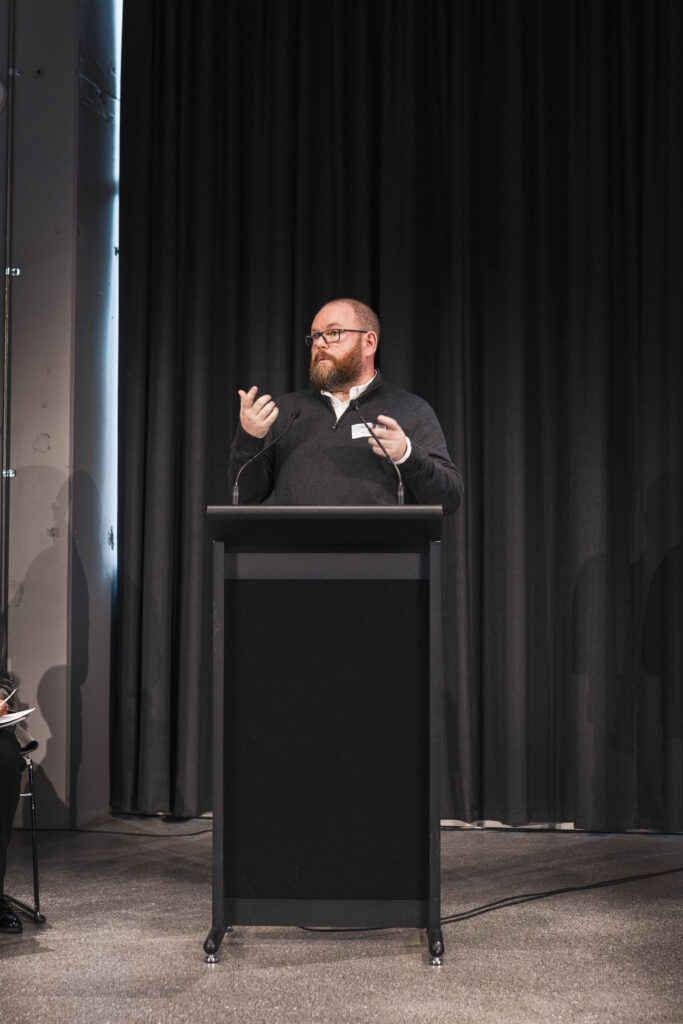
These ideas and themes recurred in exhibitions, presentations and conversations throughout the day.
At Cultural Ex-Change Roundtables, experts and attendees discussed the changes needed to policy, regulation, education, skills and training and practice on ground. Topics included:
- Putting innovation into practice: common roadblocks faced in the building industry (Xlam/Hyne Timber)
- Use of emerging technologies for regulatory inspections of building work (Victorian Building Authority)
- Exploring drivers and barriers for delivering industry change (Master Builders Association Victoria)
- Human and organisational benefits of mass timber construction in the workplace (Sumitomo Forestry and QUT)
- Circular economy methodologies: potential, challenges and risks in the Australian market with (Populous, QUT and Bluescope)
- Integrating digital literacy into trade training (Holmesglen Institute)
- Modernising building construction: the future of education and training in the ‘digital age’ (Holmesglen Institute)
- Innovative solutions for electrifying the future (Nexans)
- Expansion of the Future Homes Program across Victoria and the opportunity for industry (Office of the Victorian Government Architect)
- How to foster an innovative culture through rapid idea validation and experimentation (Realtair)
- How can innovation fit into the established building sector mechanism of standardisation, regulation and policy? (Standards Australia)
- How technology and innovation can deliver ESG outcomes (Taronga Ventures).
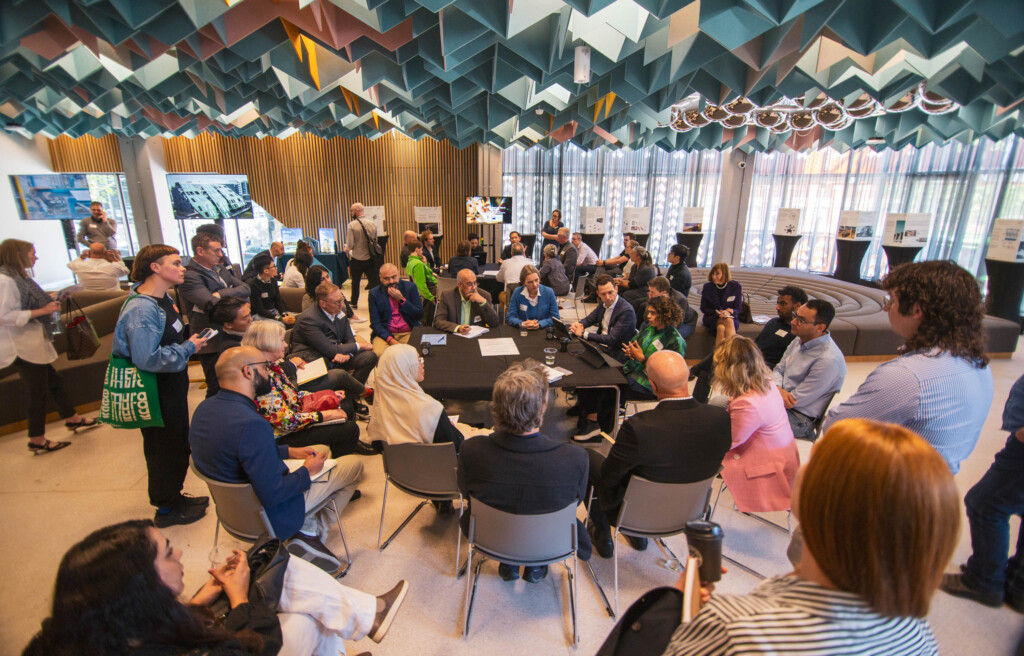
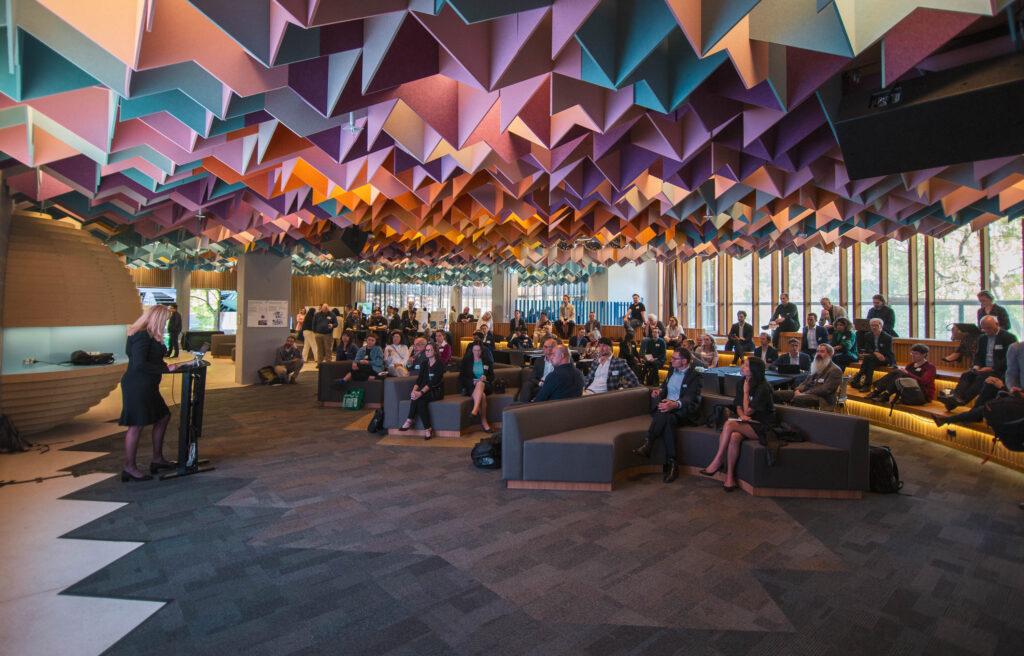
Attendees saw technologies that allow us to build better, faster, more sustainably and cheaper in action:
- BlueScope TRUECORE® steel
- Sumitomo Forestry Projects
- Nexans Modular Wiring and Mobiway UN’REEL
- Populous APAC’s Sustainability Action Plan and Design Framework
- inndox technology platform for digital logbooks
- Immersiv 3D digital twins for off-the-plan residential developments
- Sightdata systems that identify safety incidents and hazards on construction sites in real time.
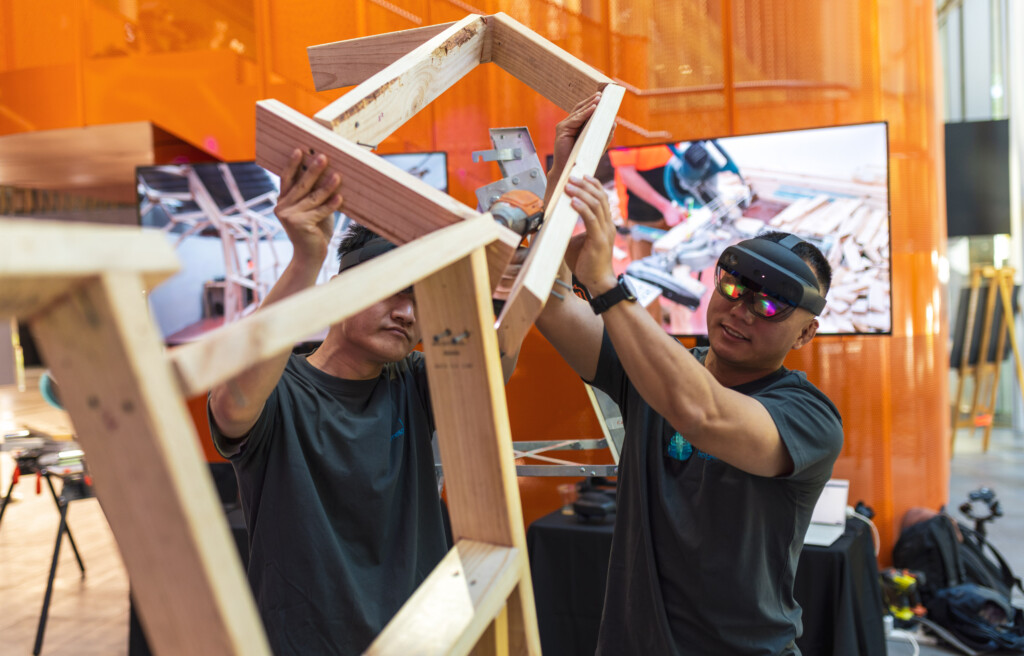
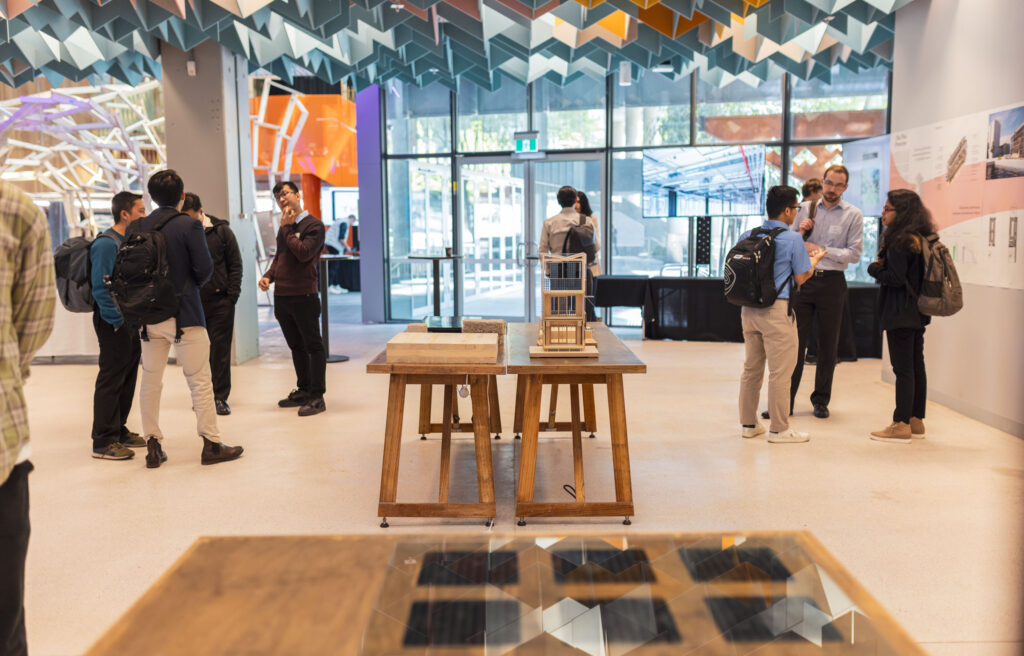
At the end of the day, people were still exploring ways to create a culture of innovation in our building industry. Speakers and presenters from throughout the day shared their thoughts on the next steps, which included:
- building our Forge equivalent in Australia
- getting comfortable with being uncomfortable and leaning into the complexity
- building everyone a home
- finding out why Australia’s big developers are not innovating
- engaging government and unions in innovation
- taking advantage of current disruption to restructure the industry
- investing in R&D
- challenging the risk averse nature of the industry particularly the big players.
Professor Mathew Aitchison (CEO, Building 4.0 CRC) summed up a key sentiment:
“Innovation is a team sport. It’s not easy, but we have the levers we can pull.”
